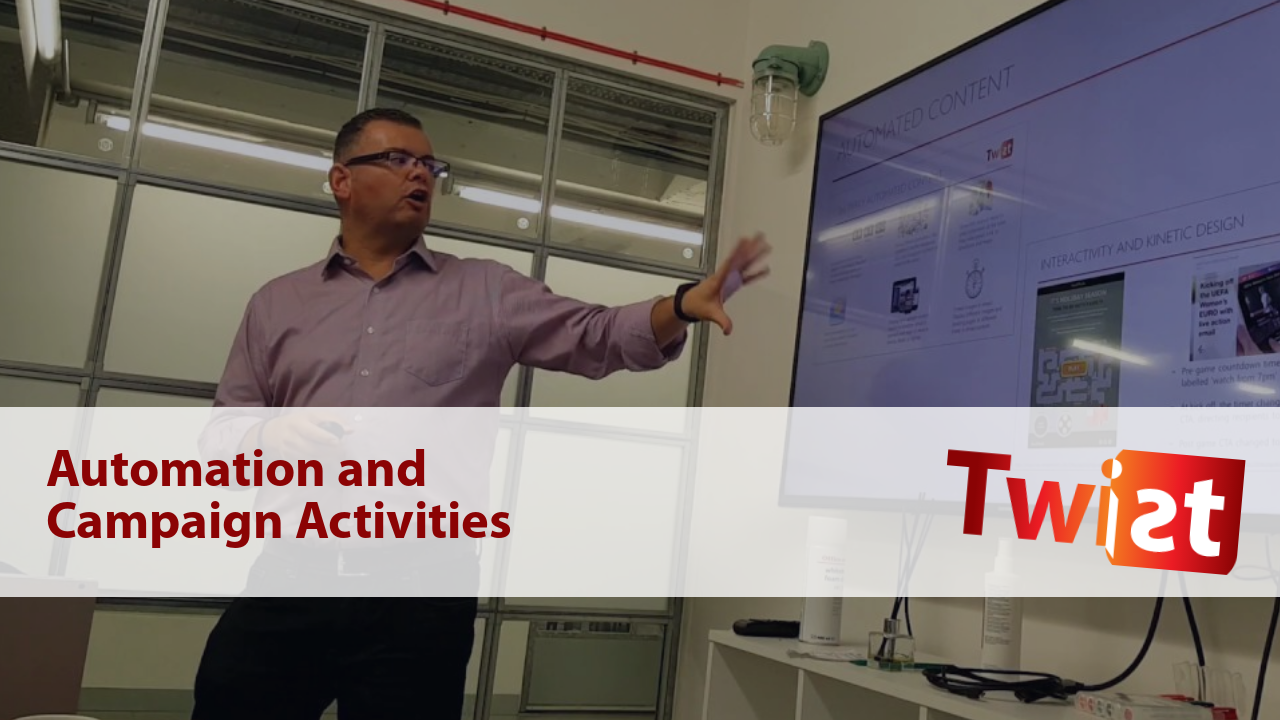Twist Blog

Automation and Campaign Activities
In this blog, we will take a look at automation and campaign activities based around a typical life stage model;
- First becoming aware
- Considering
- First use
- Multi-use
A repeating cycle between stages 2 and 4 would ideally become a loyalty loop.
If the loyalty model doesn’t work, then you are likely to end up moving into a lapsing, or win-back phase.
Let’s take a look at the key activities that we could deliver, based around that life stage. From getting someone to sign up, through to the transactional order confirmations, to anniversary, as well as cross-sell and upsell opportunities.
There is a lot for any businesses to do in one go, so this can be simplified right back to three core areas that we should look at;
- Abandon – Because its revenue generating before we start.
- Welcome – Because it’s the second most engaged that anyone will be with your business (The point where they are happy for you to send them stuff)
- Loyalty and win-back – Because it’s cheaper to get somebody to repurchase from you than it is to acquire a new customer.
In terms of putting that effort around them, it’s important to put a return on investment model together.
This is a funnelling of;
- What’s the volume of people I might be able to reach?
- Of those, who can I actually send the activity to?
- What might be the conversion?
- What revenue does that bring me?
In order to understand how much it is going to cost to implement, verses how much am I likely see come back in, and that becomes your marketing return on investment.
In terms of reaching this tipping point, deciding to actually doing something, it’s important to gain clarity, to avoid stalling and getting paralyzed in the process. If you’ve got clarity of what your messages are, who your customer is, and how to actually find those groups within your data, then you can start to do something with them.
Ideally you can then start to automate, scale and become more sophisticated because you’ve got multiple variations of these sends. Letting the machine take care of it, rather than having to continually build and re-build.
Using automation, look at other ways of personalising. Contextual, delivering content based on open, rather than send. From a countdown timer, to social scrapes of web content. This is the development of email across a kinetic approach, with different content being shown depending on when you’re opening that content. Therefore you’ve got one email build being used in multiple ways.
Finally we need to be looking at the progression and maturity, from one send to everyone, through to segmentation and then ideally on to individualisation. That’s where AI really starts to come in, with regards to being able to take more and more data points and actually help inform what the message, channel and timing should be, beyond having to guess and work it out manually.
Remember that well built systems not only save time and effort but they are more predictable and make more money for the business too.





